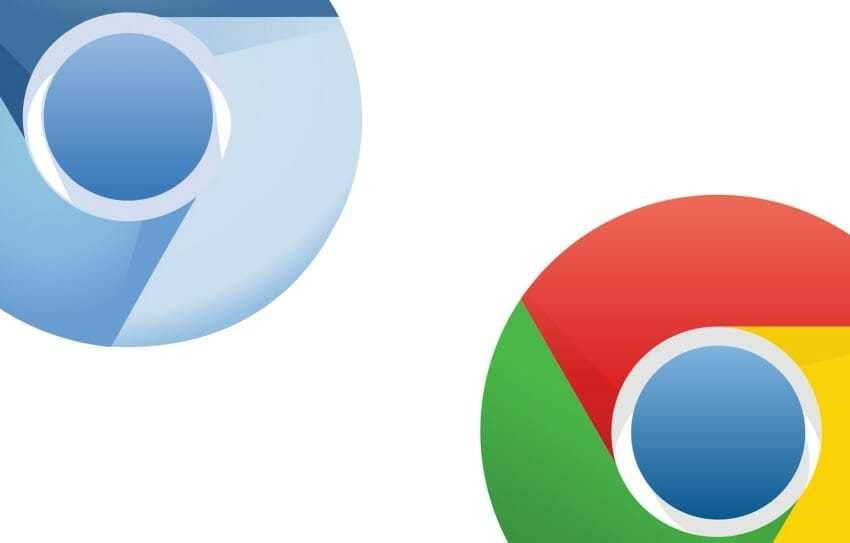The Chromium it is a program tourof open source that constitutes the base for Google's Chrome browser. Let's see what this means.
When Google first introduced 2008 to Chrome, it also released the Chromium source code as an open source project on which Chrome is based. This open source is developed by Chromium Project, while Chrome is developed by Google itself.
The biggest difference between the two browsers is that while Chrome is based on Chromium, Google has added a lot of features to its browser, such as automatic updates and support for additional video formats.
Google has taken a similar approach to Chromium OS, which is an open source project that forms the basis of Chrome OS - the operating system running on Chromebooks.
What Chrome Does Not Do by Chromium
Chrome is based on Chromium, but Google has added several closed-source bits to the Chrome browser. Specifically, Google gets Chromium and adds the following:
AAC, H.264, and MP3 Support. Chrome has licensed codecs for these proprietary media formats, enabling you to have a wider variety of media content – especially for pages using HTML5 video for steaming H.264 video. Both prelettertours include the basic, free codecs: Opus, Theora, Vorbis, VP8, VP9 and WAV.
Adobe Flash (PPAPI). Chrome includes a Flash API Pepper API (PPAPI) plug-in that automatically updates Google along with Chrome. This is the way Google uses to automatically upgrade Flash to Linux. Even on Windows or Mac systems, Chrome's Flash PPAPI Flash plugin is much better than the Flash NPAPI available from the Adobe website.
Google Update. Chrome on Windows and Mac users have an extra background running app that automatically keeps Chrome up to date. Linux users use standard software management tools.
Extension Restrictions. In Chrome, Google disables extensions that are not hosted on the Chrome Web Store.
Report bugs. The Chrome user can choose to send statistics and data for any errors to Google to analyze them.
Sandbox security. Google has the feature in both browsers. However, it states that in some Linux distributions allows disabling the Chromium sandbox, which is running by default (you can do this from about:sandbox).
However, Chromium is still at the heart of Google. For example, Chromium contains the same synchronization features that Chrome has, allowing you to sign in with a Google Account and sync your data.
Download Chromium
Acquiring Google Chrome on any platform simply requires a visit to the Google Chrome download page, so let's take a look at how you can download Chromium.
In Linux distributions, Chromium is downloaded and installed directly from the software repositories of each distribution. Arch, for example, is in the official repositories but you can also find it in AUR. Chromium is updated with security updates through the software repositories of each Linux distribution.
On Windows and Mac systems, using Chrómium is a bit more difficult. You can get the official versions of Chrómium, but they will not be automatically updated. Updater is part of the Google Chrome closed-source code. You could of course use third-party updaters as long as you trust them.
Is Spyware Available?
As mentioned before, Google Chrome has debugging features, which is not available on Chromium. If you choose to enable error reporting in Chrome, the error information will be sent to Google.
Chromium also does not have the ability to track usage or "count users" in Chrome. This is an optional feature that sends information about how to use the various parts of the browser to Google, giving them data that they can use to make decisions.
In the past, many were concerned that Chrome was sending a unique "client ID" and reported that Chromium did not. Google has stopped doing this since 2010.
However, Chromium includes many features that depend on Google's servers and these features are enabled by default. You can view these features from the Chromium Settings page. Settings include a web service that helps correct bad web addresses, a prediction service, Google anti-phishing, and more.
What should I use?
The Chromium Browser is useful because it allows Linux distributions that require open source software to have a web browser almost identical to Chrome. There are Linux distributions that use Chromium as the default web browser instead of Firefox. If you use open source software and try to avoid any software that contains code, Chromium is for you.
However, many Linux users who are not so passionate (to compulsive) with open source software can install Chrome instead of Chromium. Chrome installation provides a better Flash player if you use Flash and unlocks a large amount of media content online. For example, Google Chrome on Linux can now stream video from Netflix. This requires H.264 support for HTML5 video, which is not available on Chrоmium.
So Chrome or Chrome browser? If you use Windows or Mac systems, the choice is clear. The choice should be made by Linux users.





